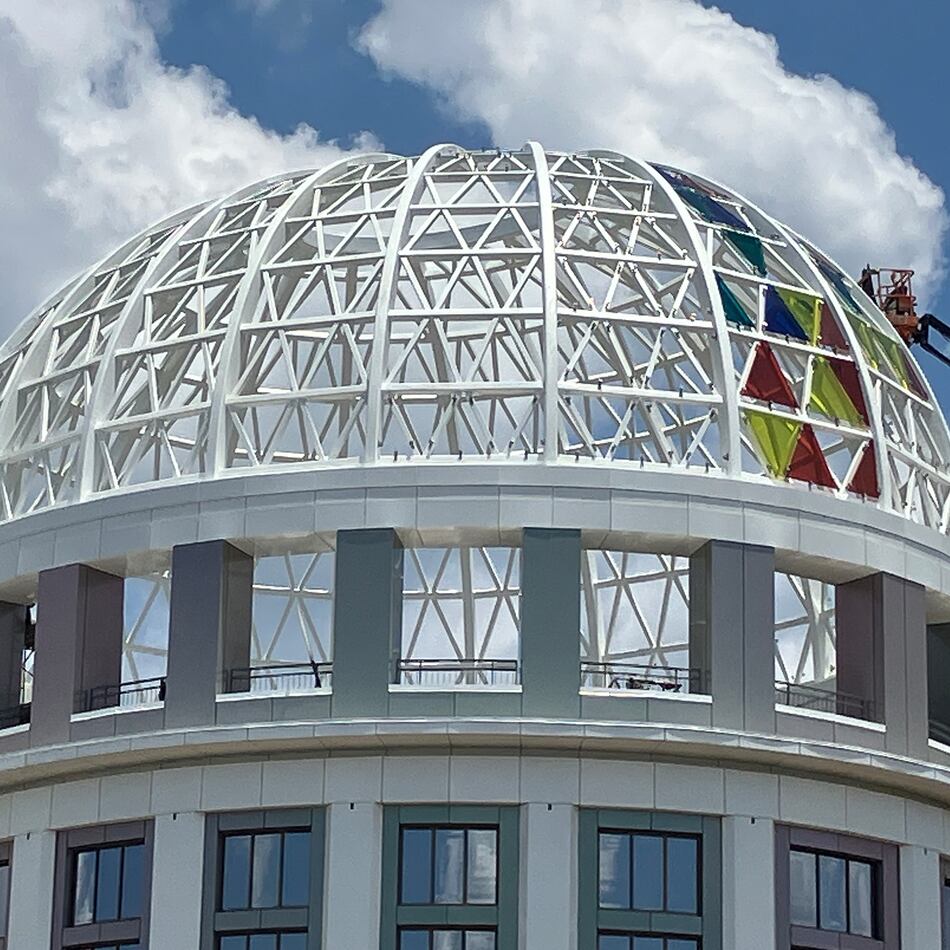Many of us have spent some time at Sanford Stadium in Athens or looked across the Midtown skyline from Grant Field in Midtown. Who hasn't spent a Friday night at one of the hundreds of high school stadiums across the state?
But have you ever wondered who is Sanford? Or who was Alexander and did he do at Georgia Tech to get his name on the basketball arena? Northcutt? Colquitt? Stegeman? Who are those guys?
Here's a quick look at where some of these names came from, including as many metro-area high schools with football championships as our research staff could dig up. Regrettably, the list includes just one place named for a 5th century B.C. battle in Greece. (No, we're not kidding).
Sanford Stadium (University of Georgia): Disappointingly, this has little to do with Redd Foxx. The stadium was named for Dr. Steadman Vincent Sanford, an early 20th-century UGA president who was instrumental in getting the place built in 1929, just in time to whip Yale. The Elis haven't been back since.
Grant Field (Georgia Tech): Most know about Bobby Dodd Stadium, named after the school's winningest football coach. But the field was named not for Cary nor Ulysses nor Amy but for Hugh Inman Grant, the stadium's original benefactor, in 1914.
Stegeman Coliseum (University of Georgia): This one's named for Herman James Stegeman, who coached UGA basketball 1919-31, football 1920-22, baseball 1919-20 and track and field from 1920-37. Wonder what he did in his spare time?
Alexander Memorial Coliseum (Georgia Tech): William A. Alexander was Tech's football coach from 1920-44 and followed up John Heisman as athletics director. Everyone called him Coach Alex. Coach Alex Coliseum didn't cut it.
Hughes Spalding Field (Marist School): Named for a lawyer and graduate of then-Marist College, Spalding was recognized for his work to get the school moved to its current location from Ivy Street (now Peachtree Center Avenue), and then helping to get both the gym and football stadium built.
Tom Riden Stadium (Buford High School): Riden coached Buford from 1946 to 1960, posted the school's first undefeated season in 1946 and had a state runner-up finish in 1954. Today, it's apparently against state rules to beat Buford, which has more state titles (six) than losses (four) in the past nine seasons.
Thermopylae Stadium (North Springs High School): No, it's not a local insulation company. The Battle of Thermopylae, between the Persian empire of Xerxes and the Greeks in 480 B.C, was the subject of the blood-splattered film "300." The 300 were Spartans. North Springs is the Spartans. Get it?
Colquitt Stadium (Woodward Academy): James A. Colquitt, who died earlier this year at 91, took a post-graduate course at Georgia Military Academy (later Woodward Academy) in the 1930s and then basically did everything and met everyone. According to his obituary, he was friends with President Harry Truman, fought in World War II, met with Winston Churchill, General Dwight Eisenhower, General George Patton, General Secretary Josef Stalin and, yes, Bob Hope and Mickey Rooney.
George B. Maloof Stadium (St. Pius X High School): Ironically Maloof was a graduate of rival Marist. He built St. Pius football from the ground up, winning a state title and seven region or sub-region titles while coaching the first 26 years of the program.
Martin E. Kilpatrick Stadium (Lovett School): A local attorney and Lovett board of trustees member from 1959-77, Kilpatrick was a key part of the group that got the stadium built and opened in 1966. The home stands, which overlook the Chattahoochee River, give fans a terrific view even on nights when the teams aren't as terrific.
Northcutt Stadium (Marietta High School): Jake Northcutt was the first football coach in Marietta High history, leading the team from 1920-23. During that time, the Blue Devils played in Brown's Park, located where the current parking lot is adjacent to Northcutt. Place was a mud pit whenever it rained.A definite upgrade.
Ray Manus Stadium (Roswell High School): Manus spent 41 years at Roswell, serving as football coach from 1975-97 and athletics director from 1977-99. He helped get the football stadium built when the school moved to its current location in 1990.
Henderson Stadium (Wesleyan School): Russ Henderson, who died of Lou Gehrig's Disease just before the school moved to Norcross in 1996, has his name on the stadium because his friend, Malcolm Powell, requested it after making a substantial gift to help get it built. Henderson liked to call everyone he met "Tiger." It didn't stick. The Wolves play in Henderson Field.
About the Author
Keep Reading
The Latest
Featured

